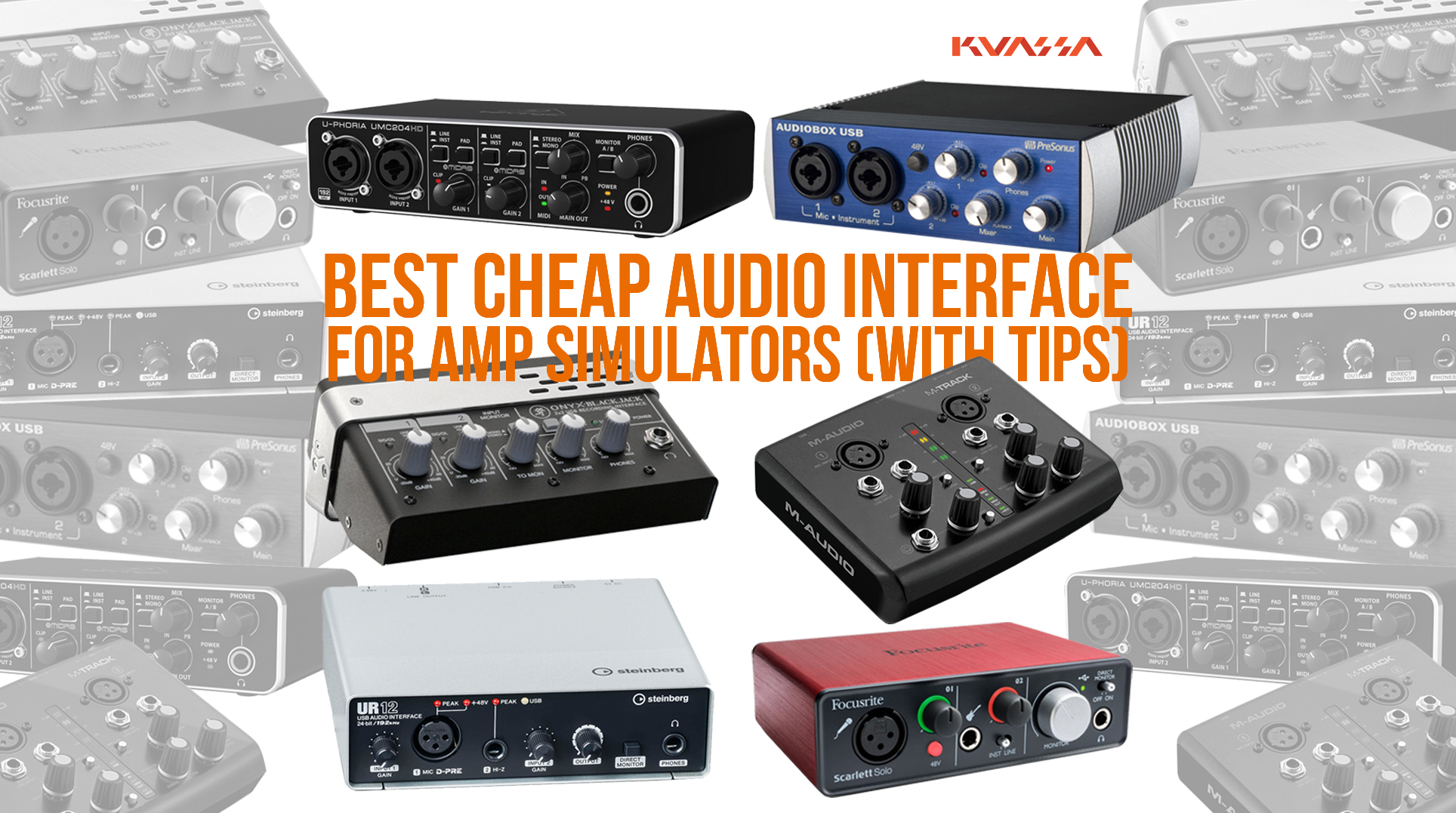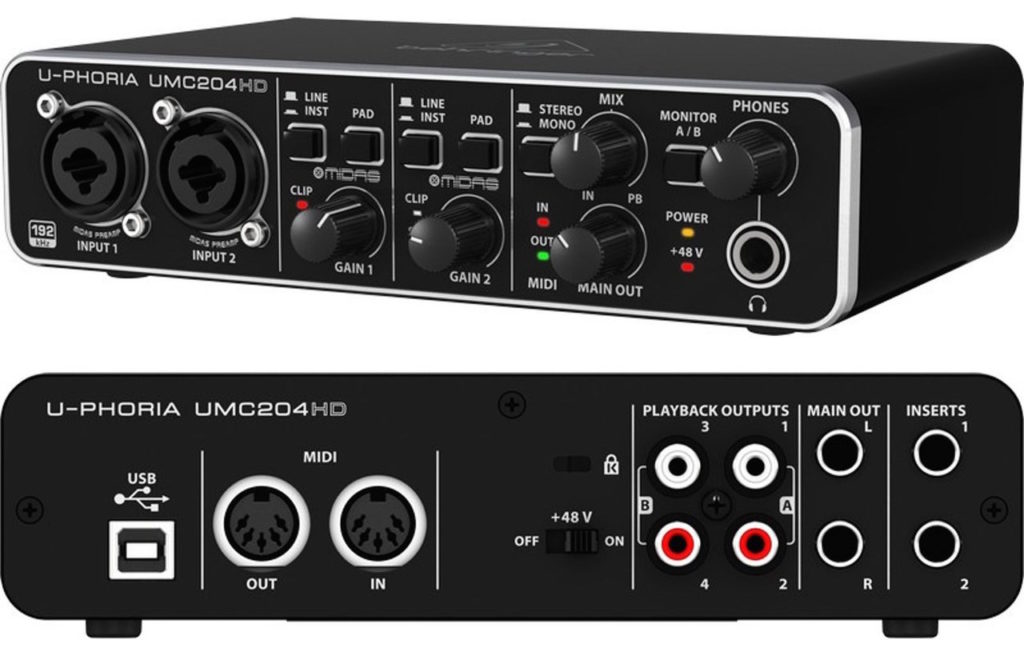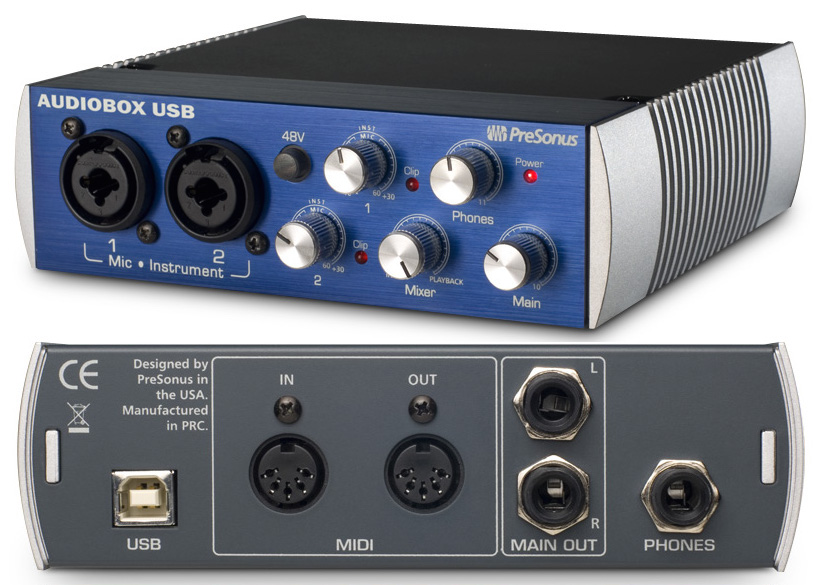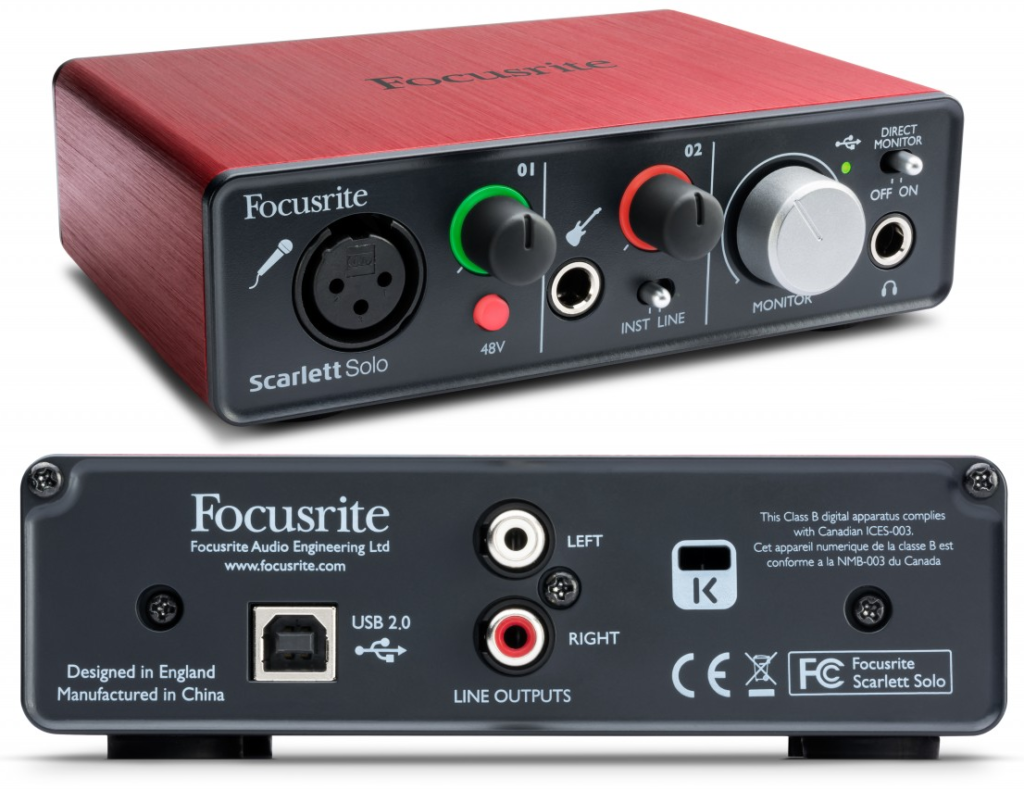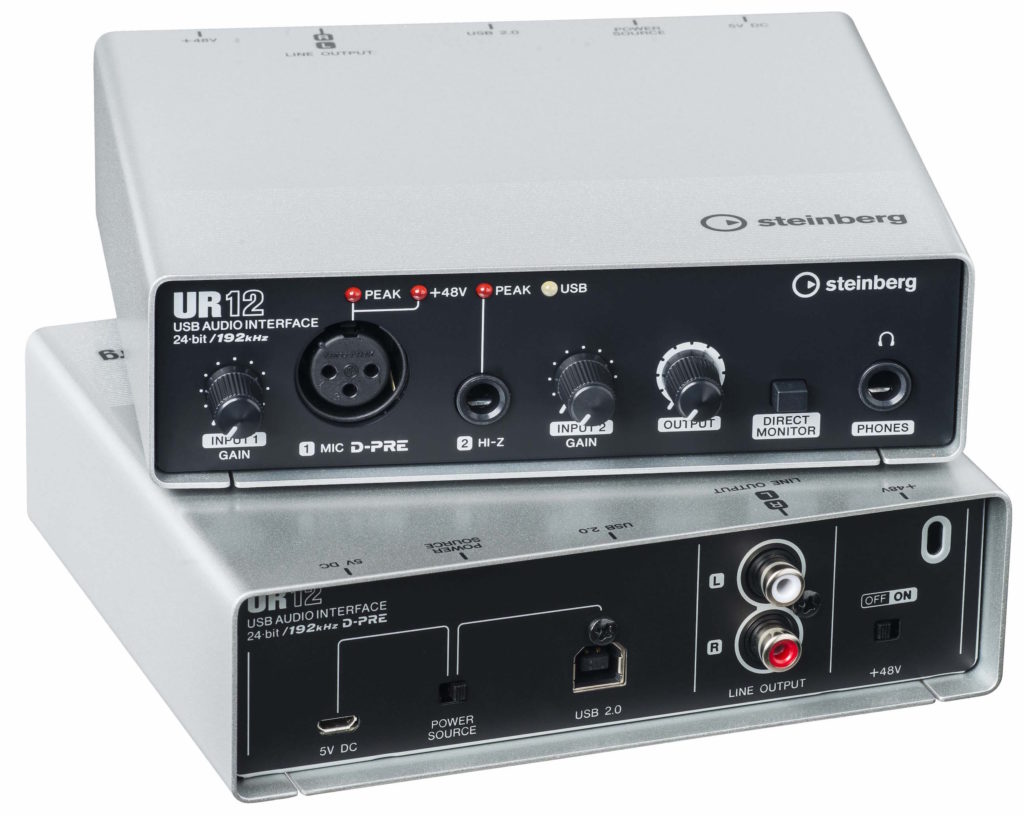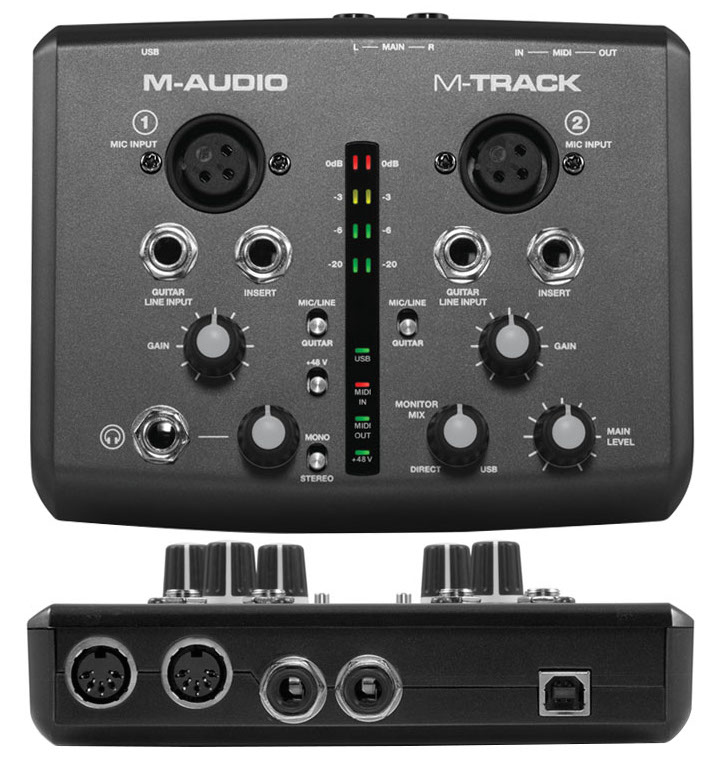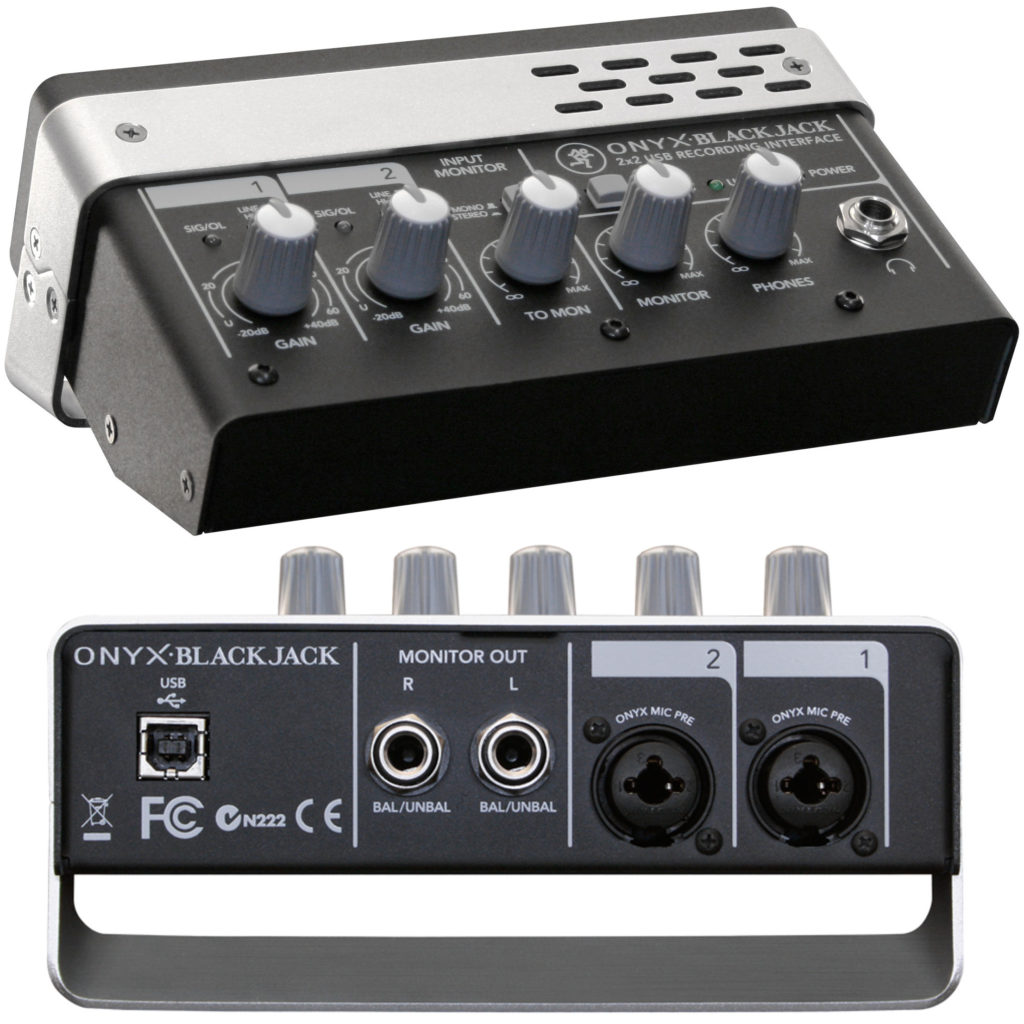One day, a good recording session goes wrong when our good old audio interface / sound card suddenly stops working without prior symptoms, then we need to find a cheap replacement as soon as possible with only $100 left on our bank account. So, the hunt for the best cheap audio interface / sound card begins….
We realized that with such a small budget we can’t expect much, but at least there’s some minimum criteria we need to set. Anyhow, here are our criteria for the (cheap) new audio interface:
- Less than $100
- Decent, good instrument pre-amp(s) for its price will be critical since we use it mainly for amp simulators.
- Good driver for both Mac and Windows.
- Can handle as small latency as possible* (critical for amp simulator users)
- Not overly complicated to setup and use. We play guitars not a tech admin aren’t we?
- Decent monitoring output a.k.a. transparent. so you can hear your processed guitars better
- Small and portable. Until we have enough money to get a much better quality audio interface/ sound card, it will serve as a portable backup audio interface for mobile purposes. e.g. playing live with amp simulators
- USB 2.0 connection, just because an Audio Interface / Sound Card with thunderbolt or firewire ones will cost pretty much higher.
- On the technical sides, here’s some specifications that needs to be present, or nice to have:
- Input:
- Microphone input with pre amplifier for using Microphone with or without phantom Power (+48v) to a studio condenser microphone via an XLR socket
- Instrument input – TS/TRS cable for guitar and other line signal sources, HI-Z input. Subjectively, we prefer Hi-Z instrument input with 1 MΩ impedance (Based on our experience this gives the best clarity and sound when using amp simulators).
- MIDI – connecting MIDI keyboards , drumpads, MIDI controllers. Not any amp simulator users need one, but it’s nice to have one.
- Output:
- Headphones monitoring the audio with Headphones
- Monitors stereo outputs on back of the audio interface for Studio Monitors
- USB Interface for connection to your computer
- Input:
*Some notes on low latency drivers:
Depends on your CPU power. For playing guitars, really low latencies will increase CPU usage. You may experience audio artefacts a.k.a “crackles” and “pop’s”. But any of current modern CPU processors should be able to handle the audio stream. We are using i3 and i5 processors at the moment from the “third generation” of Intel Processors and apparently, they are powerful enough 🙂
**Some important tips for better performance and low latency (Useful when you using a Laptop and playing amp simulator)
Make sure you use USB 2.0 port!
Go to general power management of your computer:
Start > Control Panel > System and Security > Power Options.
Power Scheme to High Performance
For Power Options, change advanced power settings:
Hard disk > Turn off hard disk after > Setting (Minutes) = Never
Sleep > Sleep after > Setting (Minutes) = Never
USB settings > USB selective suspend setting > Setting = Disabled
Processor power management > Minimum processor state > Setting = 100%
Behringer U-Phoria UMC204HD ($79.99)
PROS:
- For the price it has an amazing list of options; the input attenuation pads are present. If you use hot active pickups, this can be a life saver!
- Some of the other Audio Interface / Sound Card brands doesn’t include this functionality to lower hot levels.
- Great pre amps for amp simulator purposes, up to 192kHz
CONS:
- No Driver! although ASIO4ALL can be used.
- Some users report the DI inputs do not sound good with high-Z instruments. But that’s subjective…
- please try with your guitars and respected amp simulators. It depends on your guitar and pickups!
Behringer U-Phoria UMC204HD USB 2.0 Audio Interface Features:
- Quality 24-bit/192kHz 2-channel USB 2.0 recording interface for your Mac or Windows PC
- Combo inputs with MIDAS preamp lets you plug in any mic-, line-, or instrument-level gear
- +48V phantom power lets you use studio condenser microphones
- Switchable input pads accommodate even extremely hot line-level signal
- Tip-send/Ring-return 1/4″ insert points let you incorporate outboard processors
- MIDI In and Out ports let you connect keyboard controllers and other MIDI gear
- Stereo 1/4″, RCA, and headphone outputs with latency-free monitoring make tracking easy
Presonus AudioBox (USB connection) $99
PROS:
- Affordable, stableAudio Interface / Sound Card. Plug and play!
- Nice pre-amps for direct recording guitars. Perfect for amp simulator users.
CONS:
- The input impedance: 0.5 megohm is a little low for our liking
- Be careful with active pickups!
additional comment: Considering the price, its a nice bang of the buckAudio Interface / Sound Card for small home recording studio. It has many users since its first release.
Presonus AudioBox Audio Interface / Sound Card Features:
- 2 dual-purpose front-panel input channels, each with high-quality mic preamplifiers
- 2 combo mic/instrument inputs
- Individual channel-trim controls with 0 to +35 dBu mic gain range
- 48V phantom power for condenser microphones
- Mixer control (blends the input signal with the computer playback stream for zero-latency monitoring)
- Headphone jack with level control
- Main-output level control
- LED clip indicator for each channel
Input/Output
- 1 USB 1.1 port
- 2 combo XLR/¼” mic/instrument inputs
- 2 balanced ¼” main (L/R) line outputs
- 1 stereo ¼” headphone output
- MIDI in/out
- Microphone Preamp
Type: XLR female balanced
Frequency response (±3.0 dB): 14Hz to 70kHz
Input impedance (balanced): 1200 ohms
THD+N (unwtd, 1kHz at +4 dBu output, unity gain): < 0.008%
EIN (A-weighted, 55dB Gain, 150 ohms Input, 20Hz to 22kHz): -115 dBu
S/N ratio (Unity Gain, Ref. = +4 dBu, 20Hz to 22kHz): > 95 dB
Common mode rejection ratio (1kHz, 55dB gain): > 45 dB
Gain control range (±1dB): 0dB to 35dB
Max input level (unity gain, 1 kHz at 0.5% THD+N): -3 dBu
Phantom power (±2 VDC): +48 VDC - Instrument Input
Type: 1/4″
TRS female unbalanced input impedance: 0.5 megohm - Line Outputs
Type: 1/4″ TRS
Balanced output impedance: 51 megohms - Headphone Output
Type: 1/4″ TRS active stereo
Maximum output: 60 mW/Ch at 60 ohm load
Frequency Response: (±1.0 dB): 20Hz ” 30kHz - MIDI I/O
Type: Dual 5-pin female DIN - Digital Audio
ADC dynamic range (Awtd, 48kHz sample rate): 102dB
DAC dynamic range (Awtd, 48kHz sample rate): 110dB
Bit depth: 24
Reference level for 0dBFS: +4 dBu
Internal sample frequency selections (kHz): 44.1, 48
Focusrite Scarlett Solo (USB connection) $99
PROS:
- On a tight budget this small Audio Interface / Sound Card is amazing!
- Good latency for live playing. Amp simulators on stage anyone?
- It comes with nice bundle of plugins:
- Focusrite’s Scarlett plug-in suite, the Red 2 and Red 3 Plug-In Suite (AAX/AU/VST), and the Softube Time and Tone Bundle upon registration of interface.
CONS:
- The input impedance is 500 kOhms, it may sound a little dull, just a little
- RCA monitor outputs 🙁
- Some users reported cpu clocking/click/static noise may heard sometimes during idle times
- Too limited on connectivity side
Focusrite Scarlett SoloAudio Interface / Sound Card Features:
Type USB 2.0
Converter 24-bit, internal clock
Sample Rates 44.1, 48, 88.2 and 96 kHz
Inputs 1 x XLR Microphone 1 x 1/4″ TRS Line/Instrument
Maximum Input Level Microphone: +4 dBu
Instrument: +15 dBu
Line: +21 dBu
Gain Range Microphone: -4 dB to +46 dB
Instrument: -16 dB to +34 dB
Line: -21 dB to +29 dB
Outputs 2 x RCA phono
1 x 1/4″ TRS Headphone
Maximum Output Level Line: +10 dBu (no load)
Headphone: +10 dBu (no load)
Dynamic Range Inputs and Outputs: 106 dB, A-weighted
Converter Chips: 114 dB
THD Microphone: -97 dB
Instrument: -95 dB
Line Input: -93 dB
Line Output: -100 dB
Headphone: -100 dB
Frequency Response Microphone: 20 Hz to 20 kHz, +/-0.3 dB
Instrument: 20 Hz to 20 kHz, +/-0.2 dB
Line Input: 20 Hz to 20 kHz, +/-0.2 dB
Noise Microphone EIN: -125 dB
Instrument EIN: -109 dB
Line Input EIN: -98 dB
Line Output EON: -92 dB, noise = -97 dB (A-weighted)
Steinberg UR12 USB Audio Interface(USB connection) $74
New interface from Steinberg (now part of Yamaha) with promising specs at amazing price!
PROS:
- Hi-Z instrument input with 1 MΩ impedance. Good for amp simulators.
- Legendary D-PRE microphone preamp from Yamaha.
- ThisAudio Interface / Sound Card feels heavy and rugged in construction.
CONS:
- UR12’s gain needs to be adjusted up to 80% to get a good input without clipping! This could rise the noise floor!
- It doesn’t have an independent knob for output and headset, which is troublesome.
Steinberg UR12 USB Audio Interface / Sound Card Features:
- Two input, two output USB 2.0 class compliant audio interface
- Single D-PRE microphone preamp
- Up to 192 kHz sampling rates and 24-bit resolution
- Latency-free hardware monitoring with an easy-to-use monitor source switch
- Loopback function allows for streaming performances live to the Internet, with incoming audio signals merged to the playback signal from Cubase or other DAWs inside the computer
- Connectivity with Apple’s iPad using Steinberg’s Cubasis music app or other iOS audio apps offers a portable production environment
- Power port and source selector for connecting a 5 VDC power source for supplying power when the interface is connected to an iPad (requires optional Apple iPad Camera Connection Kit/Lightning to USB Camera Adapter, and an external 5 VDC adapter or an external battery pack), or for guaranteeing power stability
- Compatible with all major audio editing, mastering, and music production software supporting ASIO, Core Audio or WDM standards
M-Audio M-Track (USB connection) $99
Another great littleAudio Interface / Sound Card box from M-Audio.
Our product specialist was a long user of theirs old Firewire 410. He made a few albums with 410.
Does not require any drivers.
It is plug and play for both Mac OSX and Windows.
There is a good tutorial how to install and use
M-Audio’s ASIO driver :
http://m-audio.com/kb/article/1665
Pros:
Small, light, simple, flexible, easy to use, inexpensive Audio Interface / Sound Card
Cons:
Pre-amp is too weak for amp simulator purposes. Needs a lot of gain to get a decent level with condenser mics.
M-Audio M-TrackAudio Interface / Sound Card Features:
- 24-bit / 48 kHz digital audio processing
- Zero-latency audio monitoring
- 2 XLR mic inputs with selectable phantom power
- 2 balanced 1/4″ line inputs with guitar-level switching
- 2 TRS 1/4″ inserts; one per input channel
- MIDI In and Out jacks
- Balanced 1/4″ main outputs with level control
- Headphone out with independent level control
- Convenient single USB cable data and power connection
- Includes Ignite by AIR and Ableton Live Lite
Specifications
-
XLR Inputs
- Signal to Noise Ratio: 97 dB
- THD+N: 0.005%
- Freq. Response: ±0.35 dB
-
Balanced 1/4″ TRS Inputs
- Signal to Noise Ratio: 96 dB
- THD+N: 0.034%
- Freq. Response: ±1.2 dB
-
Balanced 1/4″ TRS Outputs
- Signal to Noise Ratio: 97 dB
- THD+N: 0.005%
- Freq. Response: ±0.35 dB
Mackie Onyx Blackjack (USB connection) price: $99
Nice small and great lookingAudio Interface / Sound Card!
One of the big hookup: Hi-Z input = 1 M balanced – (better for direct guitar recording and amp simulators!)
“Built-Like-A-Tank” desktop design.
Mackie Onyx Blackjack Audio Interface / Sound Card Features:


